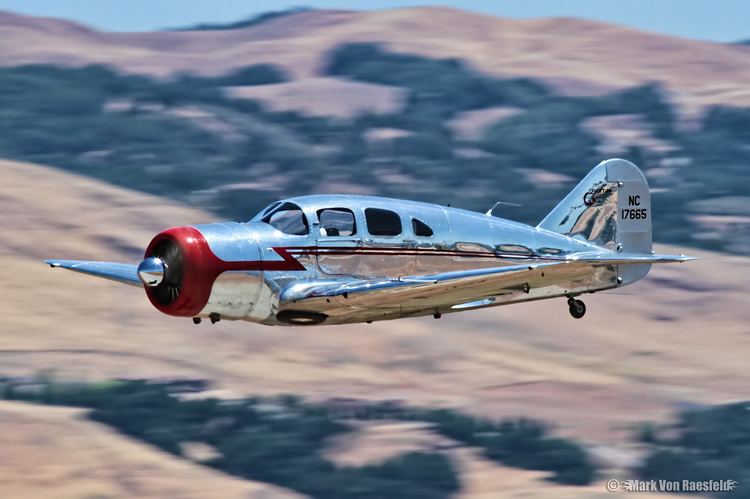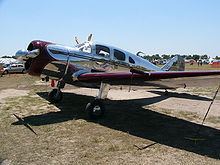Length 8.18 m Wingspan 12 m Unit cost 23,500–23,500 USD (1940) | Top speed 413 km/h Range 1,610 km First flight March 8, 1936 | |
 | ||
Engine type Pratt & Whitney R-985 Wasp Junior | ||
Spartan executive nc17633 art deco era aircraft
The Spartan 7W Executive was an aircraft produced by the Spartan Aircraft Company during the late 1930s and early 1940s. The 7W featured an all-metal fuselage as well as a retractable undercarriage. The 7W Executive was popular with affluent buyers worldwide.
Contents
- Spartan executive nc17633 art deco era aircraft
- Development
- Notable owners
- Variants
- Specifications Spartan 7W Executive
- Military operators
- References

Development

Designed for comfort, the interior of the 7W was spacious and featured 18 in (46 cm) of slide-back seat room for front-seat passengers, arm rests, ash trays, dome lighting, deep cushions, cabin heaters, ventilators, soundproofing, large windows, and interior access to the 100 lb (45 kg) capacity luggage compartment. Built during the Great Depression, the 7W was the brainchild of company-founder William G. Skelly of Skelly Oil who desired a fast, comfortable aircraft to support his tastes and those of his rich oil-executive colleagues.

The Executive's high performance allowed the aircraft to compete in the 1939 Bendix Air Races piloted by Arlene Davis where it earned fifth place. A military variant of the 7W Executive with a greenhouse canopy covering a tandem cockpit was produced by Spartan with a more powerful 600 hp (447 kW) Pratt & Whitney Wasp engine and named the Spartan 8W Zeus.
Notable owners

Including the 7X, thirty-six 7W Executives were built. Notable owners of 7Ws included aircraft designer and aviator Howard Hughes, wealthy industrialist J. Paul Getty, and King Ghazi of Iraq. King Ghazi's Spartan Executive was designated "Eagle of Iraq" and was outfitted with his Coat of Arms, an extra-luxurious interior, and customized features.
Variants

Specifications (Spartan 7W Executive)
Data from
General characteristics
Performance
Military operators
Three examples based in Montreal, formerly Royal Air Force examples used in California.
The second prototype was exported to China and serialed 1309. It was damaged beyond repair and captured by the Japanese who displayed it along with other captured Chinese aircraft.
At least one example was received by the LAPE (Líneas Aéreas Postales Españolas) to be used as an airliner marked as EC-AGM until requisitioned by the Spanish Republican Air Force and marked as 30+74. It was later captured by the Nationalists. Several others were purchased by the Republicans.
One example (AX666) was built for King Ghazi of Iraq. Used by No. 1 Photographic Reconnaissance Unit RAF. Three examples with serials KD100, KD101 and KD102 were used in California for flight training.
16 examples impressed from civil owners. All but two survived to return to civil service.
